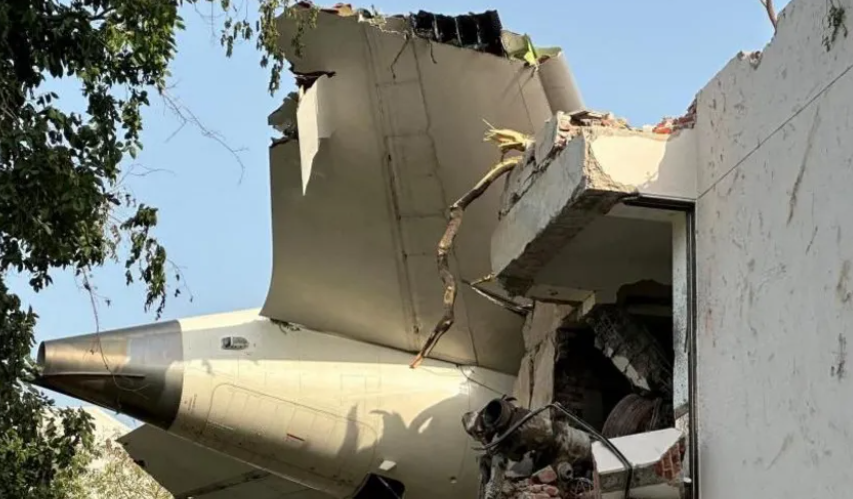Air India plane crash: 10 key findings from the initial report

Indian investigators have released a preliminary report into the Air India plane crash that killed 260 people, while the final report is expected within a year of the deadly incident.
The initial report on the world's deadliest aviation accident in a decade offered glimpses into what happened before the plane crashed into a building in the city of Ahmedabad on June 12.
Almost immediately after the plane lifted off the ground, CCTV footage shows a backup energy source called a ram air turbine had deployed, indicating a loss of power from the engines.
Here are the 10 key findings of the report released on Saturday by India's Aircraft Accident Investigation Bureau (AAIB):
Three seconds after liftoff from Ahmedabad, the fuel switches had almost simultaneously flipped from "run" to "cutoff". The preliminary report did not say how the switches could have flipped to the cutoff position during the flight. They flipped a second apart.
One pilot was heard on the cockpit voice recorder asking the other why he cut off the fuel. "The other pilot responded that he did not do so," the report said.
It did not identify which remarks were made by the flight's captain and which by the first officer.
The report does not indicate there was any emergency requiring an engine cutoff. Flipping to cutoff is most often used to turn engines off once a plane has arrived at its airport gate and in certain emergency situations, such as an engine fire.
The Boeing 787 Dreamliner bound for London immediately began to lose thrust and sink down within seconds of takeoff.
The report does not suggest that Boeing and engine maker GE had any apparent responsibility for the accident. It does not include any recommended actions aimed at operators of Boeing 787 jets or the GE engines.
Before impact, one crew member transmitted a “Mayday, Mayday, Mayday” call at 08:09:05 GMT. The report did not identify which pilot transmitted the clear distress call just before the crash.
The commanding pilot of the Air India plane was Sumeet Sabharwal, 56, who had a total flying experience of 15,638 hours and, according to the Indian government, was also an Air India instructor. His co-pilot was Clive Kunder, 32, who had 3,403 hours of total experience.
The investigation will continue and the investigative team will review and examine additional evidence, records and information that is being sought from the stakeholders. Agencies including the NTSB, FAA, and the UK’s AAIB are assisting in investigations; further evidence collection continues.
There were no "dangerous goods" on the aircraft, the report highlighted.
The fuel's take-off weight was 2,13,401 Kgs."The take-off weight was within allowable limits for the given conditions," as per the report.
You may also like...
Diddy's Legal Troubles & Racketeering Trial

Music mogul Sean 'Diddy' Combs was acquitted of sex trafficking and racketeering charges but convicted on transportation...
Thomas Partey Faces Rape & Sexual Assault Charges

Former Arsenal midfielder Thomas Partey has been formally charged with multiple counts of rape and sexual assault by UK ...
Nigeria Universities Changes Admission Policies

JAMB has clarified its admission policies, rectifying a student's status, reiterating the necessity of its Central Admis...
Ghana's Economic Reforms & Gold Sector Initiatives

Ghana is undertaking a comprehensive economic overhaul with President John Dramani Mahama's 24-Hour Economy and Accelera...
WAFCON 2024 African Women's Football Tournament

The 2024 Women's Africa Cup of Nations opened with thrilling matches, seeing Nigeria's Super Falcons secure a dominant 3...
Emergence & Dynamics of Nigeria's ADC Coalition

A new opposition coalition, led by the African Democratic Congress (ADC), is emerging to challenge President Bola Ahmed ...
Demise of Olubadan of Ibadanland
Oba Owolabi Olakulehin, the 43rd Olubadan of Ibadanland, has died at 90, concluding a life of distinguished service in t...
Death of Nigerian Goalkeeping Legend Peter Rufai

Nigerian football mourns the death of legendary Super Eagles goalkeeper Peter Rufai, who passed away at 61. Known as 'Do...





